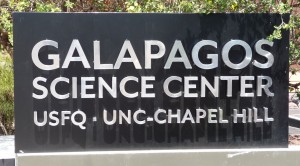

Living Galápagos is a student-authored multimedia website sharing stories of people and the environment in one of the world’s most storied places. “It has a world reputation as this bucket-list place, this place of Darwin,” said Professor Steve Walsh, director of the Center for Galapagos Studies at UNC-Chapel Hill. “As more and more people decide that they want to come and experience this special place, the place itself needs to evolve. It’s the generation of waste, the need for more electricity, more cement, asphalt, batteries, potato chips… How do you keep this place special when, in fact, the world is coming to its door?” Students on the Living Galápagos project begin by researching issues that impact the islands. The entire team, including faculty and coaches, travels to the Galápagos Islands to gather information, create content and develop the website. With a one-week deadline, students face the daunting task of finding stories, shooting interviews and producing multimedia content, all while immersed in a new culture.
Living Galápagos tells the story as people learn to coexist with the unique place in which they live. The bilingual site hosts media including information graphics, photography, documentary video and visual data created by student teams in 2009, 2012 and 2013. Living Galápagos is produced by the University of North Carolina School of Journalism and Mass Communication with support from the Galápagos Science Center, The Center for Galápagos Studies at UNC and the Galápagos Academic Institute for Arts and Sciences of the University of San Francisco de Quito.
It has a world reputation as this bucket-list place…How do you keep this place special when, in fact, the world is coming to its door?"
– Professor Steve Walsh, director of the Center for Galapagos Studies at UNC-Chapel Hill
Geographic isolation turned the Galapagos archipelago, with its unique flora and fauna, into a living laboratory. Today, a burgeoning tourism industry and a growing year-round population thrust the islands into the international spotlight.
